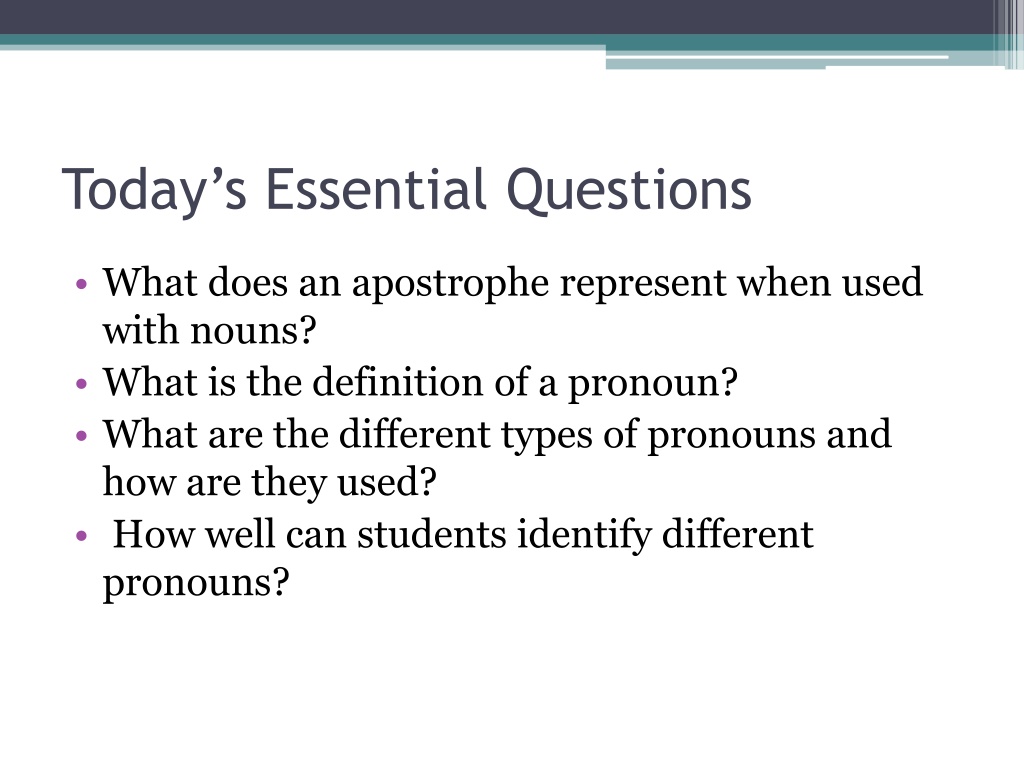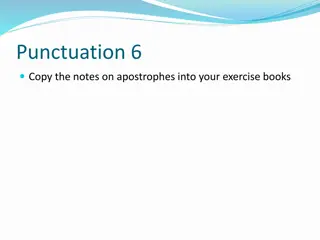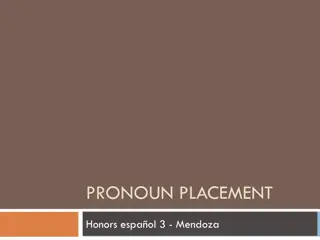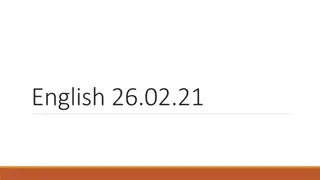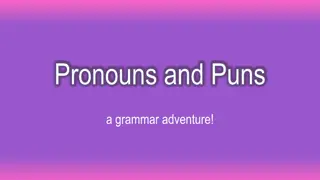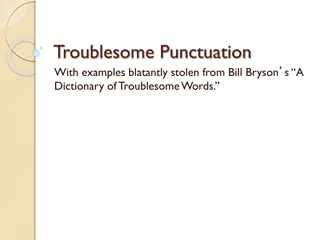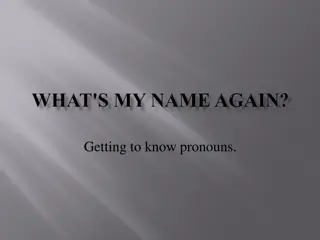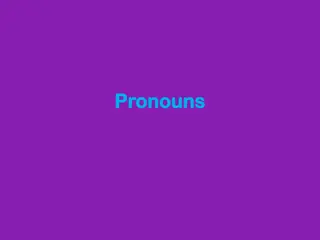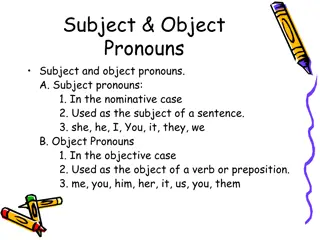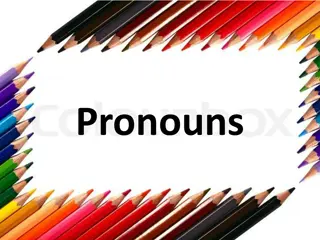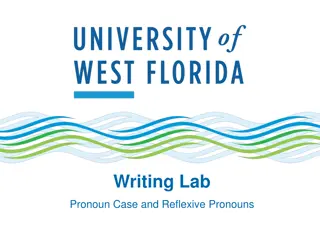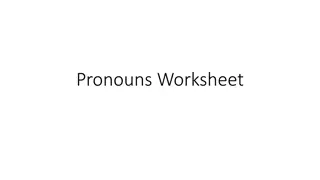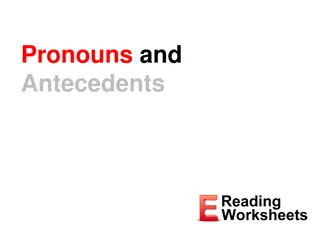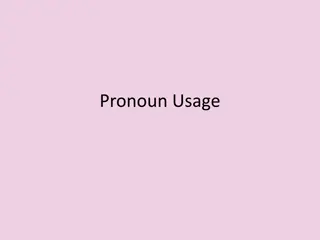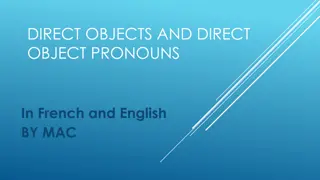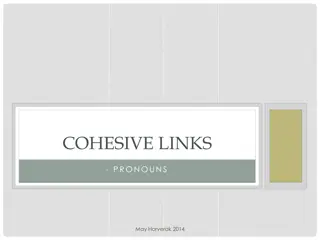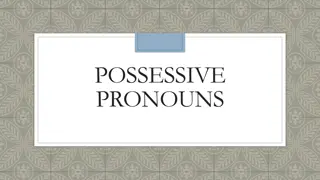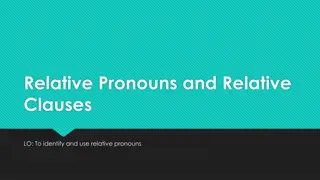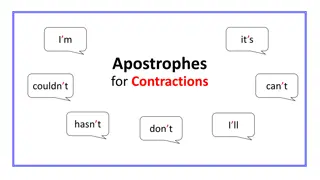Understanding Apostrophes and Pronouns in Grammar
Apostrophes are used to show ownership with nouns, while pronouns replace nouns in sentences. Learn the rules for apostrophe usage and different forms of pronouns including subject, object, and possessive pronouns. Practice identifying and using pronouns effectively in various sentence structures.
Download Presentation

Please find below an Image/Link to download the presentation.
The content on the website is provided AS IS for your information and personal use only. It may not be sold, licensed, or shared on other websites without obtaining consent from the author. Download presentation by click this link. If you encounter any issues during the download, it is possible that the publisher has removed the file from their server.
E N D
Presentation Transcript
Todays Essential Questions What does an apostrophe represent when used with nouns? What is the definition of a pronoun? What are the different types of pronouns and how are they used? How well can students identify different pronouns?
Today you will Understand clearly the use of apostrophes with nouns Use individual practice to further understand the concepts learned yesterday Define the concept of a pronoun Define and identify different forms of pronouns Apply their understanding of pronoun to identifying them in different sentence structures
Apostrophes Apostrophes are used with nouns to show ownership or possession Nouns are changed to their possessive version by simply adding an apostrophe and an s ex: Jake >>> Jake s cat >>>> cat s
The exception to the rule When a noun is already plural and ends in an s , you simply add an apostrophe to the END of the word Harris>>>> Harris s <<< correct cats>>>>> cats <<< exception
What is a pronoun? A pronoun is a word used to take the place of a noun or another pronoun.
Three Forms Subject Object Possessive
Subject Singular: I, you, she, he, it Plural: we, you, they Ex.: They cut the tree down. Ex.: I went to the mall.
Object Singular: me, you, her, him, it Plural: us, you, them Ex.: William thanked her. Ex.: Maggie asked us to join in.
Possessive Singular: my, mine, your, yours, her, hers, his, its Plural: our, ours, your, yours, their, theirs Ex.: Where is his book? Ex.: That is my choice.
Possessives and Contractions Beware! Many people confuse the possessive forms of some pronouns with the contractions they resemble. Pairs often confused include: its and it s, your and you re, & their and they re. Remember: the possessive pronouns DO NOT have apostrophes! This can be confusing because possessive nouns do have apostrophes. The dog lost its tags. VS. It s raining again. The twins rode their bikes. VS. They re riding bikes.
What is an ANTECEDENT? The antecedent of a pronoun is the noun or the other pronoun for which the pronoun replaces/stands. The antecedent USUALLY appears before the pronoun in a sentence; sometimes it appears in the sentence before. The architect came today and brought her drawings. (architect is the antecedent of her) Debby and Tom came in. They were laughing. (Debby and Tom are the antecedents of they)
Indefinite Pronouns An indefinite pronoun is a pronoun that does not refer to a particular person or thing. Some are singular and some are plural.
Singular Indefinite Pronouns Another Anybody Anyone Anything Each Either Everybody Everyone Everything Neither Nobody No one One Somebody Someone
Plural Indefinite Pronouns Few Many Several Some
